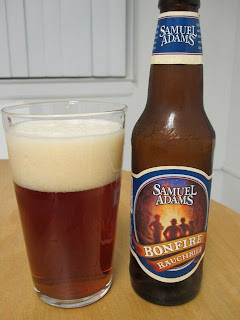Monday, October 24, 2011
Fall, Part 2
Saturday, October 22, 2011
Fall, Part I
Wednesday, October 5, 2011
Nostalgia begets whiskey
Leopold Brothers claim that they produce their American Small Batch Whiskey in the pre-prohibition style, which is to say that they barrel at a lower proof (98 instead of the modern 125), ferment naturally without refrigeration, and distil the corn and rye over a whole day instead of flash-boiling. Interestingly they claim that by barreling at a lower proof this allows "more of the whiskey to come into contact with the barrel, allowing the mild brown sugar and molasses notes that come from the charred barrels to shine through." I'm not sure how that's true, unless the lower alcohol content means that the "angel's share" is smaller. Anyway, the real question is how does this pre-prohibition whiskey stack up?
For the record, I'm drinking this neat. First, the whiskey is very clear and light in color. Leopold Brothers doesn't state on the bottle or their website how long they're aging the whiskey in the barrel but I wouldn't think more than a year and certainly not more than two. It's similar in color and clarity to hard cider or a desert white wine. It has a mellow smell, mostly yeast and alcohol. The taste is similarly mild and distinctly unlike most bourbon. The whiskey is sweet, tasting slightly of vanilla and corn syrup. It's not cloying, but it is mellow and pretty one-dimensional.
So my verdict? I wouldn't buy this again or order it at a bar, but it wasn't bad. I'm actually intrigued to try some of Leopold Brother's other whiskeys. They make a "New York Apple Whiskey" that I might have to seek out given how much I love hard cider and Calvados.
Monday, October 3, 2011
Devoid of Flavor
Bud Light, Coors Light, Miller Lite: Is There Any Difference?
BY ERIC ASIMOV Denis Carrier
Denis CarrierIt's true that the craft-beer movement of the last 30 years has exposed a lot of Americans to the idea that good beer is complex, flavorful and distinctive. It's also true that Americans buy an enormous amount of terrible beer. Six of the 10 best-selling beers in the United States are light beers, including Bud Light at No. 1 (it outsells No. 2 Budweiser by more than 2 to 1), Coors Light at No. 3 and Miller Lite at No. 4. Because huge budgets are devoted to television advertising, industry analysts say that light-beer sales are "marketing driven." Basically, what the beers taste like is less important than the effectiveness of their ads — Bud Light's "Real Men of Genius" or Miller Lite's "Be a Man" campaign or Coors Light's labels that turn blue when properly cold. And apparently there is a need for the latter — sales of Bud Light and Miller Lite have declined for three straight years as Coors Light has shown modest growth.
I recently sampled the best-selling light beers to see if there was any palatable difference between them. The results: Coors Light offered no smell and no taste, but as the label indicated, it was indeed cold. Bud Light, which promises "superior drinkability," had only the faintest hint of bitterness but was otherwise devoid of flavor. Miller Lite was the clear winner. It seemed almost robust by comparison, but still hardly bitter. For added thrills, I drank a Michelob Ultra, the 12th-best-selling brand. Now here was a beer that truly tasted like nothing — no smell, no taste, not even the cold sensation of the Coors Light. If you want to drink basically nothing, Michelob Ultra is for you.









